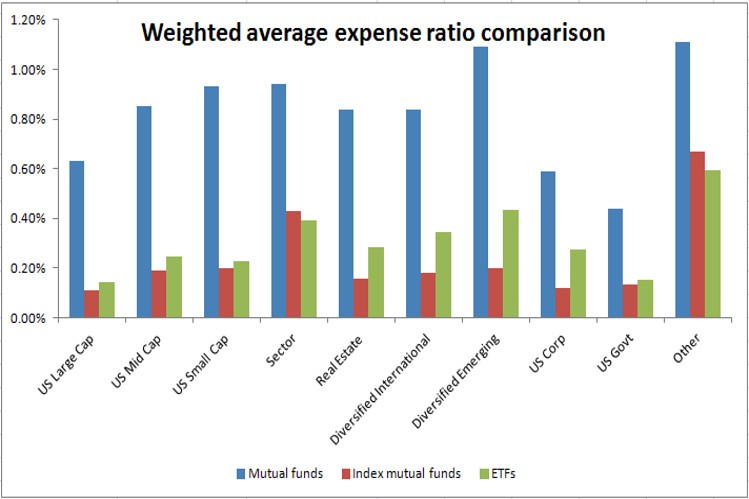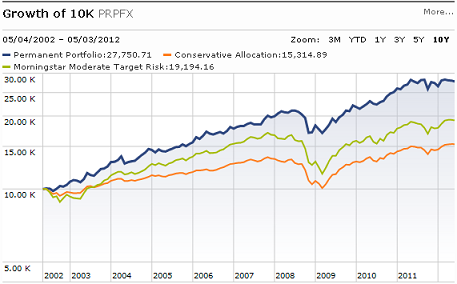ETFs vs mutual funds
Post on: 17 Июль, 2015 No Comment

I recently read an article that proclaimed the benefits of mutual funds over exchange-traded funds (ETFs) even while admitting most mutual funds were “mediocre.” While mutual funds remain the favoured investment option for most Canadians, the popularity of ETFs is growing and for good reason.
Mutual funds and ETFs are cousins. They have much in common, but also some key differences. Hence the antagonism as their respective creators fight for the same turf.
Both mutual funds and ETFs offer easy, diversified access to the markets. Most mutual funds claim that their active decision making about which stocks to buy helps them outperform a comparable index. In reality, many mutual funds either hug the index or fare worse after taking into account their fees. Most ETFs, on the other hand, simply are the index, nothing more and only a little bit less.
Some investors believe that mutual funds are somehow safer than ETFs. But water is wet regardless of its container. A mutual fund holding stocks will be as risky or safe as an ETF holding stocks.
But you always know what you are getting with most ETFs: an index managed to certain fixed rules. With a mutual fund, there is the chance of drifting away from a mandate if, say, a new manager takes over. We often see what should be a Canadian-only equity fund holding foreign shares or a big gold bullion position.
Others believe ETFs are for day-traders and speculators. By their very nature, ETFs allow for speculative trading, while mutual funds, with their end-of-day or week trading windows and various front and back loads, cannot be used by speculators. But because of their continuous liquidity, ETFs can be traded at close to their actual fair value. The mutual fund’s restricted liquidity means investors buy at a premium and sell at a discount.
The biggest difference between them, however, is fees. Canadian mutual funds are notorious for their complicated and expensive fees. The typical Canadian equity mutual fund’s annual management expense ratio is 2.5%. Add to that another 0.15% in trading expenses and the total fee is about 2.65%.
There also can be other fees for simply buying a fund (called an initial sales charge or front-load fee) or when selling a fund (called a deferred sales charge or a back-load fee). Fees are different for different series of the same fund. Do you have Class A or F? It makes a difference.
From the fees, the advisor gets a cut called a trailer fee. Advisors need to make a living, but why compensate them in this crafty way? Furthermore, the trailer puts advisors’ interests at odds with their clients: Will they recommend the best fund or the fund paying the best trailer? What would happen if doctors were paid more to prescribe branded drugs than generics?
By comparison, ETFs are cheap. A Canadian equity ETF such as iShares S&P TSX 60 (XIU/TSX) charges 0.18%. That’s it. No front or back loads. No trailers.

True, you have to pay the broker’s commission to trade an ETF, which can range from $10 to $30 per transaction. But on a $100,000 portfolio holding, say, eight ETFs and rebalancing twice a year, paying $30 a trade adds up to about $400 a year or about 0.40%. In total, that still adds up to less than 0.70% a year, assuming that some of the ETFs you buy will charge more than XIU does.
You may want a professional to manage your portfolio of ETFs for you. Most investment counsellors charge between 1% and 1.5%. That brings the total cost closer to 2%, still below most mutual funds and, thankfully, without all the subterfuge.
If actively managed mutual funds did better than index-linked ETFs, then an argument in their favor could be made. But most mutual funds simply don’t do that. Compare two of the largest equity funds in Canada, the RBC Canadian Equity Fund with $5-billion in assets and the Investors Canadian Large Cap Fund with $2.2-billion in assets, to the iShares S&P TSX 60 ETF (XIU/TSX), an ETF with a similar large-cap focus.
As the accompanying table shows, XIU beat the RBC fund every year and the Investors fund every year but one. For the entire period beginning in 2004, the total return for XIU beat RBC’s fund by 20 percentage points and Investors’ fund by 54 percentage points.
Low, straight-forward fees, transparency and outperformance: ETFs simply are the better cousins. The sooner more investors realize that, the better-off they will be.
Vikash Jain, MSc, CFA, is vice-president and portfolio manager with archerETF Portfolio Management, a division of Bellwether Investment Management Inc. Visit archerETF IQ blog at archeretf.com/blog. The author may hold positions in securities mentioned in this report.














